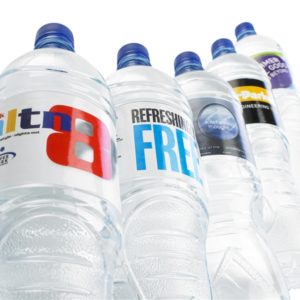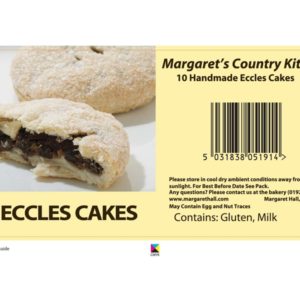Packet Food Labels
Home / Full Product Range / Food and Drink Labels / Packet Food Labels
Packet Food Labels FAQs
In the UK, most types of packaged foods require labels, especially those that are pre-packaged and sold directly to consumers. Snacks, confectionery, bakery items, dairy products, ready meals, sauces, dressings, and beverages are a few examples of packet food that require labelling. The requirement for labelling extends to any food item that is pre-packaged, irrespective of whether it’s in solid, liquid, frozen, dried, or in partially processed form. The primary reason is to provide transparency regarding the contents, nutritional information, and any potential allergens.
Legally, a packaged food label in the UK must display the name of the food, a ‘best before’ or ‘use by’ date, any necessary warnings, net quantity information, a list of ingredients (if there is more than one), the country or place of origin (if required), the use-by date, any special storage conditions, and instructions for use or cooking if necessary. For foods sold in Great Britain, the label must also include the name and address of the UK or EU business responsible for the information on the food.
Certain packaged foods are exempt from bearing a full food label, such as food that is not pre-packaged, food packaged at the sales site at the consumer’s request, or pre-packaged for immediate sale. However, even these categories must provide certain information, such as allergen labelling, to ensure consumer safety.
Natasha’s Law, officially known as the UK Food Information Amendment, came into effect in October 2021. It mandates that all pre-packaged food for direct sale must have a label with a complete list of ingredients and allergens emphasised within it. This law was introduced to protect allergy sufferers and give them the confidence in the food they buy, following the tragic death of Natasha Ednan-Laperouse caused by an allergic reaction to an unlabelled ingredient.
Yes, but the difference primarily concerns the level of detail required on the label. Pre-packaged foods require comprehensive labelling including nutritional information, ingredients, allergens, and storage instructions. Packet food labels, while still needing to adhere to labelling regulations, may have different requirements based on the product type, intended use, and whether the food is sold within the same premises where it’s packaged. For further details on this please call us and we will do our best to help.
Best practices for displaying allergen information on food labels in the UK include highlighting allergenic ingredients in bold, italics, or a different colour in the ingredients list. This makes them easily identifiable. It’s also best practice to use clear language and ensure that the allergen information is located in a consistent place on the label, typically within the ingredients list.
Front-of-pack labelling typically includes simplified nutritional information to help consumers make healthier choices at a glance. It often displays energy (calories), fat, saturated fat, sugars, and salt content. Back-of-pack labelling is more comprehensive, providing detailed information including the list of ingredients, allergen information, storage instructions, and a more detailed nutritional breakdown.
Yes, the traffic light labelling system is applied to packaged foods in the UK, although its use is voluntary. It provides a quick and easy way for consumers to assess the nutritional content of food products using colour coding (red, amber, green) to indicate whether the product has high, medium, or low amounts of fat, saturated fats, sugars, and salt.
Packet Food Labels FAQs
In the UK, most types of packaged foods require labels, especially those that are pre-packaged and sold directly to consumers. Snacks, confectionery, bakery items, dairy products, ready meals, sauces, dressings, and beverages are a few examples of packet food that require labelling. The requirement for labelling extends to any food item that is pre-packaged, irrespective of whether it’s in solid, liquid, frozen, dried, or in partially processed form. The primary reason is to provide transparency regarding the contents, nutritional information, and any potential allergens.
Legally, a packaged food label in the UK must display the name of the food, a ‘best before’ or ‘use by’ date, any necessary warnings, net quantity information, a list of ingredients (if there is more than one), the country or place of origin (if required), the use-by date, any special storage conditions, and instructions for use or cooking if necessary. For foods sold in Great Britain, the label must also include the name and address of the UK or EU business responsible for the information on the food.
Certain packaged foods are exempt from bearing a full food label, such as food that is not pre-packaged, food packaged at the sales site at the consumer’s request, or pre-packaged for immediate sale. However, even these categories must provide certain information, such as allergen labelling, to ensure consumer safety.
Natasha’s Law, officially known as the UK Food Information Amendment, came into effect in October 2021. It mandates that all pre-packaged food for direct sale must have a label with a complete list of ingredients and allergens emphasised within it. This law was introduced to protect allergy sufferers and give them the confidence in the food they buy, following the tragic death of Natasha Ednan-Laperouse caused by an allergic reaction to an unlabelled ingredient.
Yes, but the difference primarily concerns the level of detail required on the label. Pre-packaged foods require comprehensive labelling including nutritional information, ingredients, allergens, and storage instructions. Packet food labels, while still needing to adhere to labelling regulations, may have different requirements based on the product type, intended use, and whether the food is sold within the same premises where it’s packaged. For further details on this please call us and we will do our best to help.
Best practices for displaying allergen information on food labels in the UK include highlighting allergenic ingredients in bold, italics, or a different colour in the ingredients list. This makes them easily identifiable. It’s also best practice to use clear language and ensure that the allergen information is located in a consistent place on the label, typically within the ingredients list.
Front-of-pack labelling typically includes simplified nutritional information to help consumers make healthier choices at a glance. It often displays energy (calories), fat, saturated fat, sugars, and salt content. Back-of-pack labelling is more comprehensive, providing detailed information including the list of ingredients, allergen information, storage instructions, and a more detailed nutritional breakdown.
Yes, the traffic light labelling system is applied to packaged foods in the UK, although its use is voluntary. It provides a quick and easy way for consumers to assess the nutritional content of food products using colour coding (red, amber, green) to indicate whether the product has high, medium, or low amounts of fat, saturated fats, sugars, and salt.






















